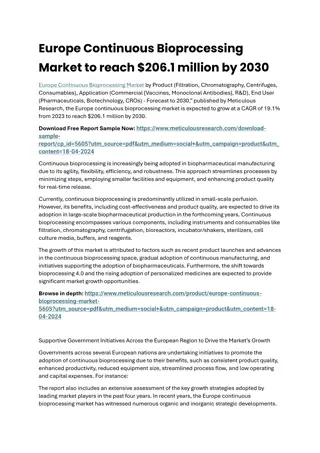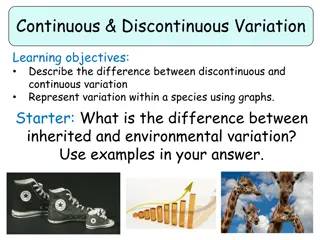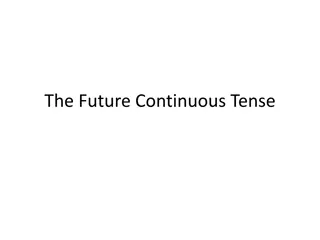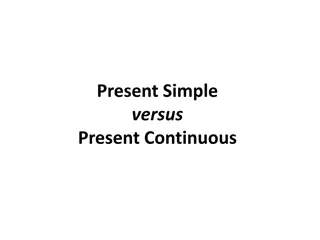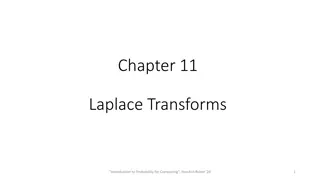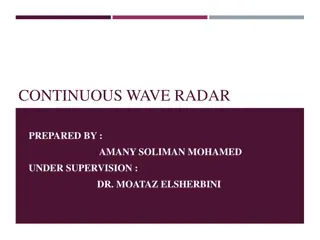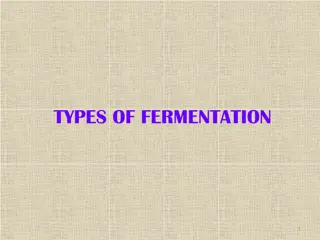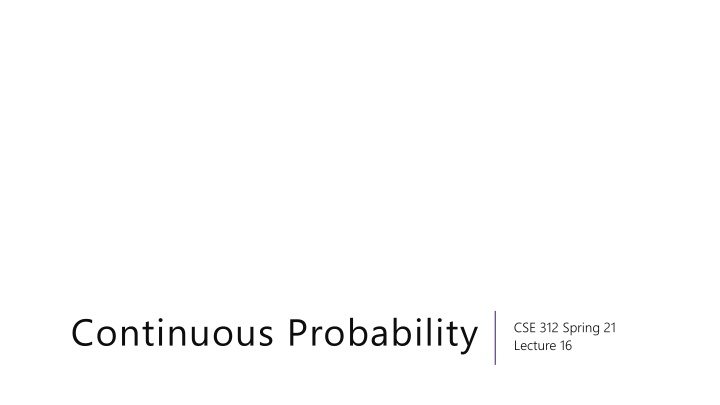
Continuous Probability: Key Concepts and Insights
Dive into the world of continuous probability, exploring topics such as probability density functions, cumulative distribution functions, and the unique aspects of continuous random variables. Develop an intuition for the differences in handling continuous data compared to discrete variables. Start building a foundation for grasping the complexities of continuous probability in computer science and beyond.
Download Presentation

Please find below an Image/Link to download the presentation.
The content on the website is provided AS IS for your information and personal use only. It may not be sold, licensed, or shared on other websites without obtaining consent from the author. If you encounter any issues during the download, it is possible that the publisher has removed the file from their server.
You are allowed to download the files provided on this website for personal or commercial use, subject to the condition that they are used lawfully. All files are the property of their respective owners.
The content on the website is provided AS IS for your information and personal use only. It may not be sold, licensed, or shared on other websites without obtaining consent from the author.
E N D
Presentation Transcript
Continuous Probability CSE 312 Spring 21 Lecture 16
Today Continuous Probability. Probability Density Function Cumulative Distribution Function Goal for today is to get intuition on what s different in the continuous case. Your goal today is to start building up a gut-feeling of what s happening. ASK QUESTIONS, (always, but today especially).
Continuous Random Variables We ll need continuous probability spaces and continuous random variables to describe experiments that have uncountably-infinite sample spaces. e.g. all real numbers How long until the next bus shows up? What location does a dart land?
Continuous Random Variables Wait, we re computer scientists. Computers don t do real numbers, why should we? Continuous random variables will be a useful model for enormous sample spaces. The math will be easier. Example: polling a large population. The sample space is actually discrete. But we re going to round the result anyway. Make it continuous first for easier math, then round.
Why Need New Rules? We want to choose a uniformly random real number between 0 and 1. What s the probability the number is between 0.4 and 0.5? For discrete random variables, we d ask for ? So we get The mathematical tools to get consistent answers from expressions like those is calculus.
Lets start with the pmf For discrete random variables, we defined the pmf: ??? = (? = ?). We can t have a pmf quite like we did for discrete random variables. Let ? be a random real number between 0 and 1. 1 ?? Let s try to maintain as many rules as we can ??? 0 was a requirement for discrete. We ll keep that for continuous random variables. ???(?) = 1 for discrete. For continuous: ? = .1 = ??(?) d?.
The probability density function For Continuous random variables, the analogous object is the probability density function we ll still use ??(?). Let s focus on making these events be correct: 1 0 ? 1 = 1 integrating is analogous to sum. ??? d? = 1 0 (? is negative) = 0 0 ??? d? = 0 .5 .4 ? .5 = .1 ??(?) d? = .1 .4
PDF for uniform Let ? be a uniform real number between 0 and 1. What should ??(?) be to make all those events integrate to the right values? ??? = 0 if ? < 0 or ? > 1 1 if 0 ? 1
Probability Density Function So ? = .1 =?? ??.1 = 1 The number that best represents (? = .1) is 0. This is different from ??(?) For continuous probability spaces: Impossible events have probability ?, but some probability ? events might be possible. So what is ??(?)???
Using the PDF Compare the events: ? .2 and ? .5 (.2 ?/2 ? .2 + ?/2) What will the pdf give? .2 ?/2 2+?/2??? d? ??.2 ? .2 .5 What happens if we look at the ratio (? .2) (? .5)
Using the PDF Compare the events: ? .2 and ? .5 (.2 ?/2 ? .2 + ?/2) What will the pdf give? .2 ?/2 2+?/2??? d? ??.2 ? .2 .5 What happens if we look at the ratio .2 ? .5 ? 2 ? .2+? 2 ? .5+? =???(.2) ???(.5)=??.2 2 ??(.5) 2
So whats the pdf? It s the number that when integrated over gives the probability of an event. Equivalently, it s number such that: -integrating over all real numbers gives 1. -comparing ??? and ??( ) gives the relative chances of ? being near ? or .
Whats a CDF? The Cumulative Distribution Function ??? = (? ?) is analogous to the CDF for discrete variables. ? ??? d? ??? = ? ? = So how do I get from CDF to PDF? Taking the derivative! ? d d d???(?) = ??? d? = ??(?) ??
Comparing Discrete Random Variables Continuous Random Variables Probability ? Equivalent to impossible All impossible events have probability 0, but not vice versa. PDF ??(?) gives chances relative to ??(? ) Integrate PDF to get probability Relative Chances PMF: ??? = (? = ?) Sum over PMF to get probability Events Convert from CDF to PMF Sum up PMF to get CDF. Look for breakpoints in CDF to get PMF. Integrate PDF to get CDF. Differentiate CDF to get PDF. ?[?] ?(?) ??(?) ? ??? d? ? ?[? ? ] ? ? ? ??(?) ?(?) ??? d? ? ? ?2 ? ? 2 ???(?) ? ?2 ? ? 2= 2??? d? ? ? ?
What about expectation? For a random variable ?, we define: ?(?) ??? d? ? ? = Just replace summing over the pmf with integrating the pdf. It still represents the average value of ?.
Expectation of a function For any function ? and any continuous random variable, ?: ? ? ? = ? ?(?) ??? ?? Again, analogous to the discrete case; just replace summation with integration and pmf with the pdf. We re going to treat this as a definition. Technically, this is really a theorem; since ?() is the pdf of ? and it only gives relative likelihoods for ?, we need a proof to guarantee it works for ?(?). Sometimes called Law of the Unconscious Statistician.
Linearity of Expectation Still true! ? ?? + ?? + ? = ?? ? + ?? ? + ? For all ?,?; even if they re continuous. Won t show you the proof for just ?[?? + ?], it s ? ?? + ? = ?? ? + ? ??(?) d? ?? ? ??? ?? + ? ? ??? ?? + ? = ?? ? + ? ???? ?? ??? ?? = = ?
Variance No surprises here ??? ? = ? ?? ? ? ?= ? ?? ??(?) ? ? ? ?
Lets calculate an expectation Let ? be a uniform random number between ? and ?. ? ??? d? ? ? = ? ?? ? 0d? 1 = ? 0 d? + ? ? ? ? ? d? + 0 ? ?=?= ? ?d? + ? = 0 + ? ?2 ?2 ?2 ?2 ?2 2 ? ?= ?+? ? ? 2 ? ? =?+? = 2(? ?) 2 ? ?= 2(? ?) 2
What about ? ? ? Let ?~Unif(?,?), what about ? ?2? ?2??? d? ? ?2= ? ??2 ?2 0 d? 1 ?2 0 d? + ? ??2 = ? ?d? + ? 1 = 0 + ? ? ?d? + 0 ? ?3 3 ?3 3 ?3 1 1 1 3 ? ? ? ? ?2+ ?? + ?2 = ? ? ?=?= = ? ? 3 =?2+??+?2 3
Lets assemble the variance Var ? = ? ?2 ? ? 2 2 =?2+??+?2 ?+? 2 3(?2+2??+?2) 3 =4(?2+??+?2) 12 12 =?2 2??+?2 12 ? ?2 12 =
Continuous Uniform Distribution ?~Unif(?,?) (uniform real number between ? and ?) 1 ? ? if ? ? ? 0 otherwise 0 ? ? ? ? if ? ? ? 1 PDF: ??? = if ? < ? CDF: ??? = if ? ? ? ? =?+? 2 ? ?2 12 Var ? =


